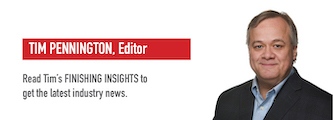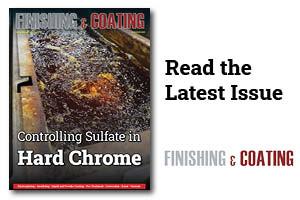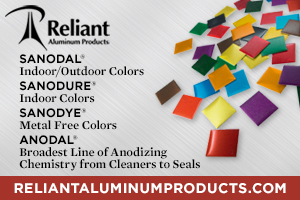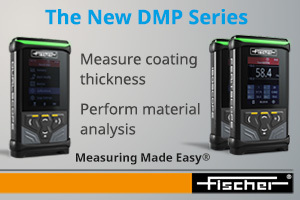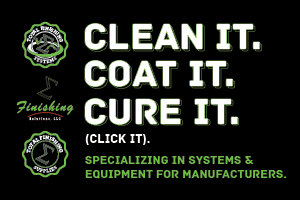The glistening stainless steel. The sleek control panel. The surge of power when you press the START button. That fresh, new process bath smell.
 Barbara and Ed KanegsbergThe smooth motion of the robotic arm as it moves parts from wash to rinse to dry. The clean parts and components are free of particles, oils, and spots. For a product manufacturer doing critical parts cleaning and surface prep, that first process run with new cleaning equipment is more exciting than the first drive in a new car.
Barbara and Ed KanegsbergThe smooth motion of the robotic arm as it moves parts from wash to rinse to dry. The clean parts and components are free of particles, oils, and spots. For a product manufacturer doing critical parts cleaning and surface prep, that first process run with new cleaning equipment is more exciting than the first drive in a new car.
If you think you need new cleaning equipment or if your boss tells you to select new equipment, it’s perfectly understandable to jump at the chance. Stop! Ask why. We will explain some factors to consider before buying new cleaning equipment. Maybe that old, lovable cleaning equipment can still perform effectively. We will discuss motivations for needing (or just wanting) new cleaning equipment, if new equipment purchases are not in the cards, how to evaluate and troubleshoot current cleaning equipment and processes. We will discuss the two-egg/basket philosophies of managing costly cleaning equipment.
What’s Driving the Need for New Cleaning Equipment?
Perhaps business is getting better. That’s the best reason for new equipment. There may be increased orders for the same product. Perhaps a new product line that contains materials of construction or higher cleaning requirements will be introduced.
The current cleaning equipment may be visually unappealing. This can be an issue during facility “walk-throughs” by current or potential customers. Your customer may require higher technical cleanliness levels than the current cleaning process is achieving. Even with no increase in required cleanliness, perhaps reject rates are increasing. The corporation may have issued a mandate to get rid of “bad” chemicals. F
or example, in the U.S., chlorinated and brominated chemicals are coming under strict regulatory mandates. Allowable worker exposure limits may be set so low that the process cannot be run in the current cleaning equipment. As far as you are concerned, the chemical might as well be banned. While exposure limits and usage allowances are under review (1), it seems unlikely that the status quo will remain. Use of PFAS is a growing uncertainty. Disposal costs of spent chemicals, both aqueous and solvent-based, may be unacceptably high; so it may be cost-effective to use a different cleaning chemistry.
This often means a revised cleaning process, and the revised process may require different equipment.
What if You Can’t Get New Cleaning Equipment?
Sometimes, even though equipment should be replaced, company policy gets in the way. The fiscal gurus may say, “Do anything as long as it does not require capital expenditures.”
What are your tactics? You could try an internal marketing campaign. Demonstrate to management how company profitability will improve with the new equipment, how continued patching of old equipment leads to unaffordable downtime and lost business.
If the answer is still “no,” take a second or third look at the current cleaning systems.
Have There Been Unexpected, Unfortunate Process Changes?
Sometimes the current cleaning equipment does not need to be replaced (2). The solution may be simple. For example, a client complained that their aqueous cleaning line needed to be replaced. Parts were not adequately cleaned. It was a simple process that included wash and rinse steps; in this case, drying was not needed. However, when we walked through the workspace, we discovered that the rinse tanks were missing.
Modular cleaning equipment can be very useful because it allows configuration changes to suit a changing workflow. It can be practical if the budget cannot be stretched to purchase a large, dedicated system. However, the cleaning equipment has to cover the important steps in cleaning. Those steps typically include wash, rinse, and dry. In this case, some people in production made the unwise, independent decision that washing the part was sufficient, deeming a rinse step unnecessary. The solution was simple. We moved the rinse tank out of storage and reconnected it. That resolved the immediate problem.
To minimize the likelihood of recurrence, the client set up a formal, written cleaning process; they made sure all the techs were trained and educated and that they adhered to the process. The client also set up a chain of responsibility, including having a Person in Charge.
In the previous example, the rinse tanks had been stored properly. We conducted a site visit for another client who wanted to determine if existing cleaning equipment could be adapted to a new process for cleaning optics. The people involved figured it would be easy because the cleaning equipment had been stored in a cleanroom. What could happen? Dear readers, we never tire of gently reminding you that a cleanroom is not a magic wand. Moving a product into a cleanroom does not automatically make the product clean. Storing a product on a bench in a cleanroom does not mean that the part will stay clean. It will gradually become contaminated. Along the same lines, a cleanroom is not an excellent storage place for cleaning equipment. We entered the cleanroom only to find not one but two different cleaning lines. The covers were askew. There was murky liquid in the tanks, along with a few fruit flies. We don’t recall if they were still swimming. In some sectors, notably the pharmaceutical industry, there are established protocols for storing, cleaning, and processing machines. It didn’t happen here! If you are responsible for cleaning equipment and need to store or decommission it, please perform a proper shutdown.
What if you have to somehow achieve successful cleaning in machines that are full of fruit flies or contaminated baths, or lines full of solvent? Resurrecting poorly-maintained cleaning systems can require substantial effort. You need a plan for cleaning the existing equipment. For any cleaning equipment, determine as much as you can about the provenance, the history of use. This will help inform the best way to clean the equipment itself. Cleaning equipment must be used in a manner that ensures contaminating material is removed, ensures employee safety, and minimizes environmental impact. Troubleshoot effectively. What was being cleaned? What soils might have been accumulating in the baths and transfer lines? Drain the baths, flush out the lines, and determine if spray bars and ultrasonic transducers are in working order. We suggest that, rather than do it yourself, hiring a professional repair person, one with expertise in your cleaning equipment, may be the way to go.
The problem may be in the cleaning process, not the equipment. We often see baskets filled to the brim with parts, then cleaned in sequential ultrasonic tanks. There is no way that the ultrasonic energy can reach parts in the center of the basket. There can be a conviction among operators that running parts through the cleaning tanks is sufficient; they don’t consider the details and logic of cleaning. A written cleaning protocol that includes maximum product throughput is a must.
Eggs and Baskets
New cleaning equipment can be costly, sometimes in the six or even 7 figure range. Replacement parts can be slow to ship, and proactive manufacturers anticipate and order spare critical parts before they are needed. Scheduling repairs can take time. What if you can’t tolerate downtime? There are two approaches. 1) Don’t put all your eggs in one basket. 2) Put all your eggs in one basket, and then watch that basket. The former adage is attributed to Miguel Cervantes in “Don Quixote”. The latter was a quote from Andrew Carnegie.
Rather than tolerate downtime, some companies choose not to put all their eggs in one basket – they get two baskets, two pieces of redundant equipment. The second machine is used for overflow production, for cleaning during repair of the primary system, and, in a pinch, for spare parts. This is an expensive choice. Not everyone is in a position to purchase two cleaning systems.
In contrast, another client has embraced the philosophy of “put all your eggs in one basket, and then watch that basket.” The company is located in the U.S.; they purchased a cleaning system from an overseas company. Gradually, they replaced foreign-made components with easier-to-obtain domestic equivalents. They ensure that parts more likely to require replacement, such as valves and pumps, are in-house and ready for use when needed. The main person in charge taught himself to do minor repairs; they are scrupulous in doing preventive maintenance, and they have an excellent rapport with their equipment repair person. The cleaning equipment has been running almost continuously for over 20 years.
References
- Barbara Kanegsberg and Ed Kanegsberg, “Vapor Degreasing: Suggestions for Clear, Effective Sustainable Rules for 1-BP, MC, TCE, and PCE,” Clean Source, The Official Journal of the Cleaning Lady and the Rocket Scientist, September 2024 https://bfksolutions.com/vapor-degreasing-suggestions-for-clear-effective-sustainable-rules-for-1-bp-mc-tce-and-pce/
- Barbara Kanegsberg and Ed Kanegsberg, “A Stitch in Time–Maintaining Critical Cleaning Equipment,” Controlled Environments Magazine, March 2013.
Barbara and Ed Kanegsberg founded BFK Solutions in 1994 as a critical cleaning consulting service and the go-to resource to make cleaning, surface quality, and contamination problems go away, or — even better — to avoid problems in the first place. Barbara, widely known as “The Cleaning Lady,” is an expert and trusted adviser in critical cleaning. Ed is known as “The Rocket Scientist.” They write Clean Source, an approximately monthly e-newsletter that provides practical ideas to improve cleaning, contamination control, and product quality. They are co-editors and contributors to the acclaimed two-volume “Handbook for Critical Cleaning,” CRC/Taylor & Francis, 2011. Visit https://bfksolutions.com




